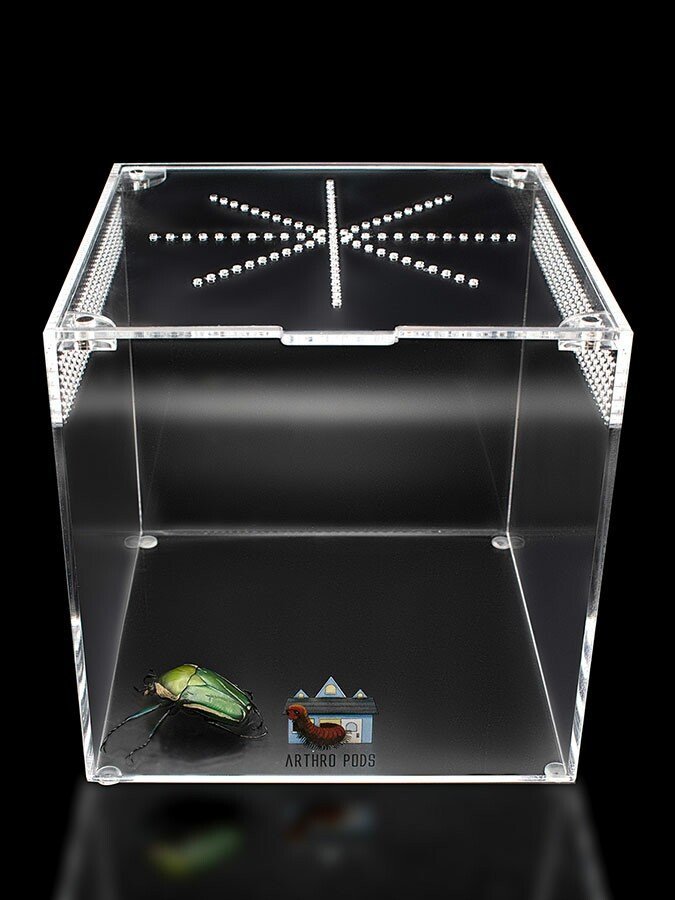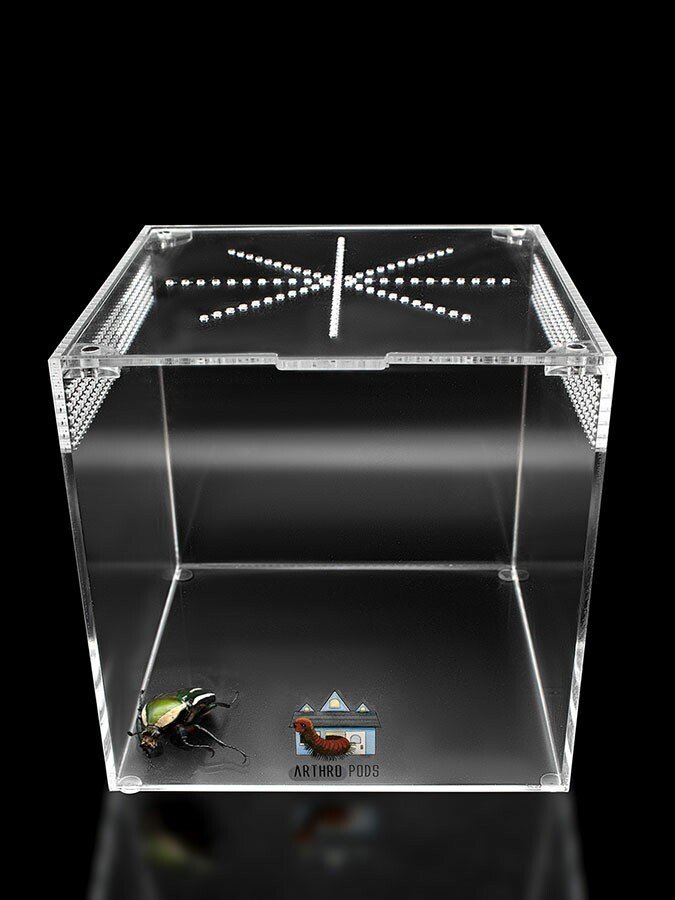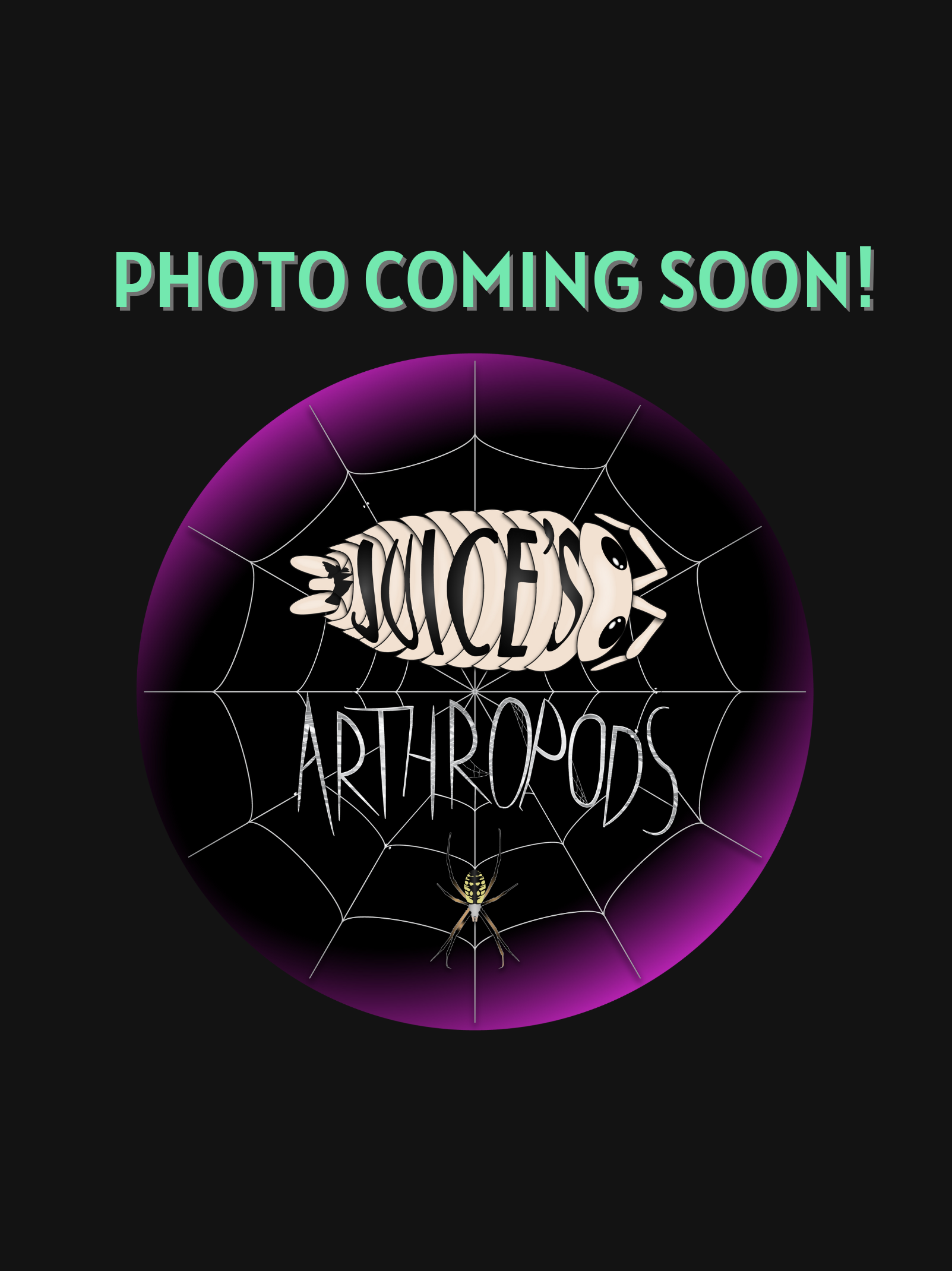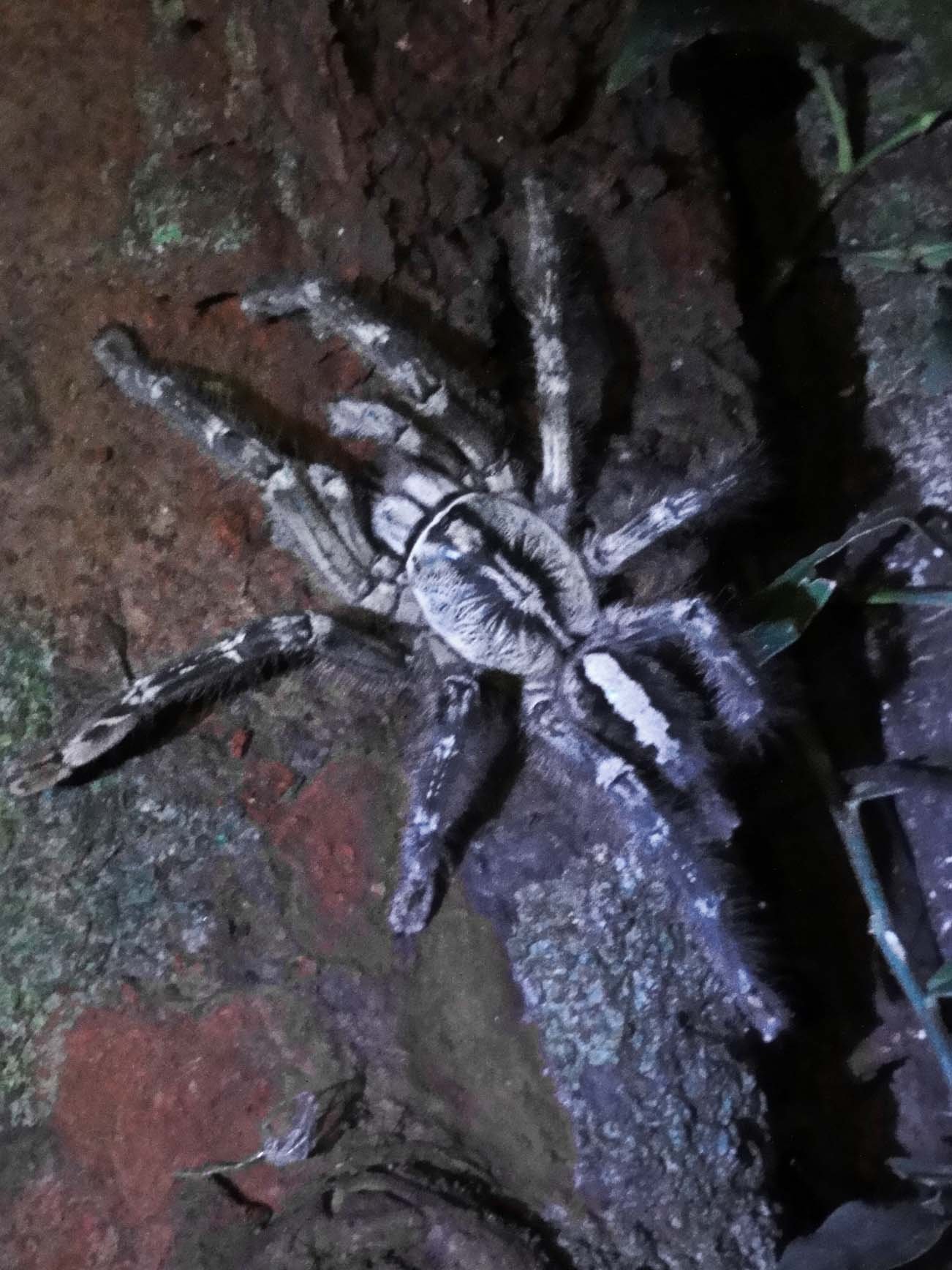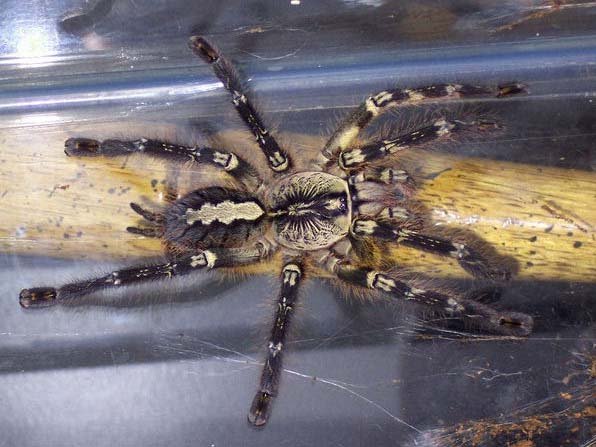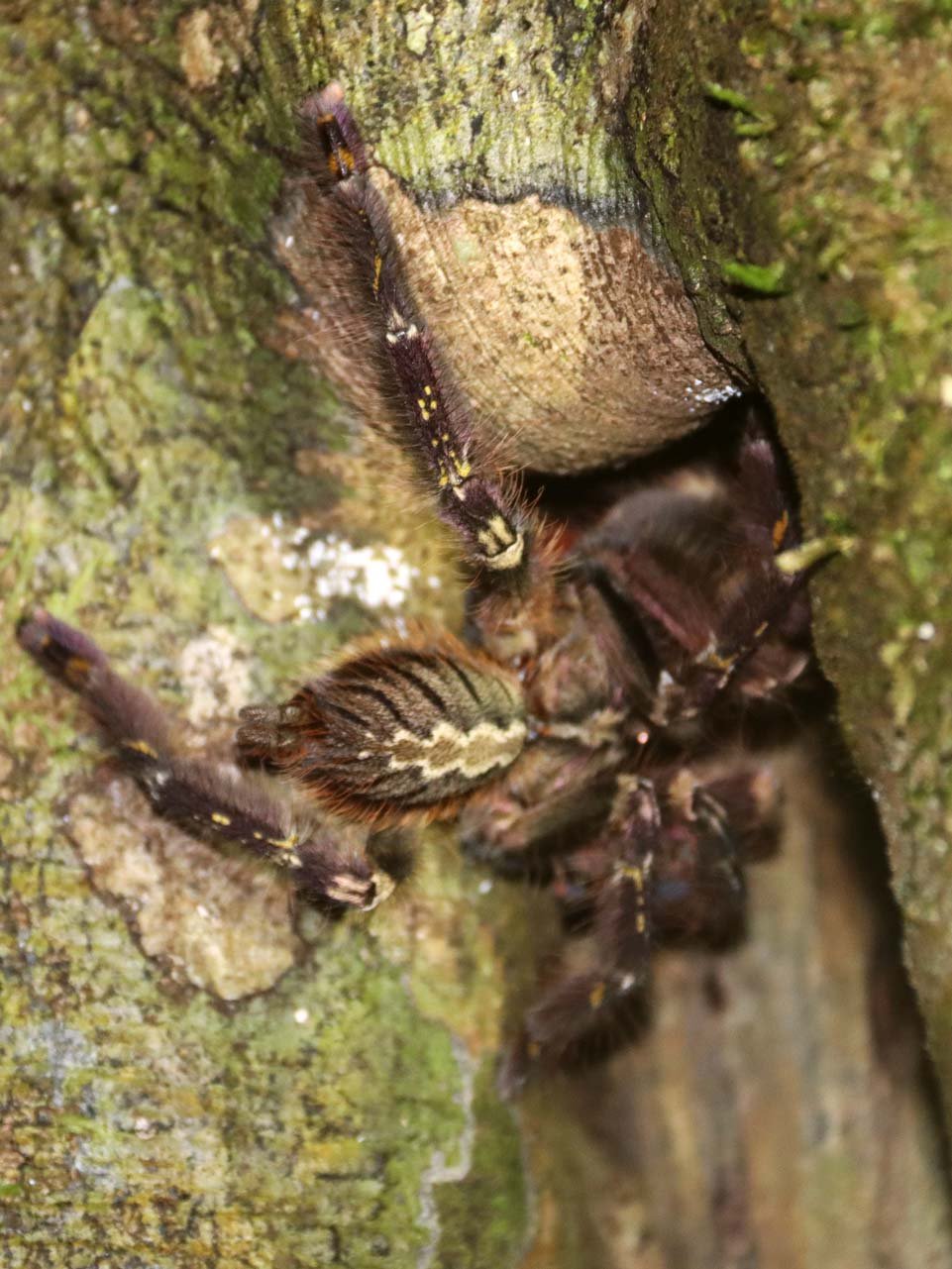Ephebopus cyanognathus
This striking fossorial, known as the Blue Fang tarantula, boasts a deep blue coloration with bright orange accents, making it a most visually impressive tarantula. They are deep burrowers but tend to have a reputation for being defensive and fast-moving, but are more apt to strike a pose than bite first and ask questions later. Even before they reach juvenile age, their vibrant and gorgeous blue chelicerae can be seen, and against the earthy tones of our Royal Soil, the colors of this mildly spicy tarantula truly pop.
This striking fossorial, known as the Blue Fang tarantula, boasts a deep blue coloration with bright orange accents, making it a most visually impressive tarantula. They are deep burrowers but tend to have a reputation for being defensive and fast-moving, but are more apt to strike a pose than bite first and ask questions later. Even before they reach juvenile age, their vibrant and gorgeous blue chelicerae can be seen, and against the earthy tones of our Royal Soil, the colors of this mildly spicy tarantula truly pop.

This striking fossorial, known as the Blue Fang tarantula, boasts a deep blue coloration with bright orange accents, making it a most visually impressive tarantula. They are deep burrowers but tend to have a reputation for being defensive and fast-moving, but are more apt to strike a pose than bite first and ask questions later. Even before they reach juvenile age, their vibrant and gorgeous blue chelicerae can be seen, and against the earthy tones of our Royal Soil, the colors of this mildly spicy tarantula truly pop.
What’s the ideal diet for a Blue Fang Tarantula?
All Tarantulas can eat a variety of feeders. We recommend crickets, dubia roaches, silkworms, horned worms occasionally, and a superworm or mealworm as the occasional treat!
How should I keep a Blue Fang Tarantula?
We recommend starting with the small Fossorial Fissure enclosure. When they are about ⅓ the size, you will want to either go to the medium or large Fossorial Fissure enclosure. As slings, feed them once a week, twice if their opisthosoma (abdomen) looks small, but if the opisthosoma is wider than their prosoma (pneumothorax), then wait a couple of days to feed. For juveniles or adults, stick to feeding once a week, nothing larger than their opisthosoma. Make sure to keep a full water dish at all times; wider and deeper is fine. Your Tarantula can’t drown; they float on water.
How long could a Blue Fang Tarantula live?
Ephebopus cyanognathus females are known to live between 13-15 years, while males live between 3-4 years on average. These are the best estimates from multiple sources.
Some photos provided by iNaturalist and Wikipedia, credit to:
Guillaume Delaitre, some rights reserved (CC BY)
Factumquintus, some rights reserved (CC BY-SA 3.0)
Thibaud Aronson, some rights reserved (CC BY-SA)







